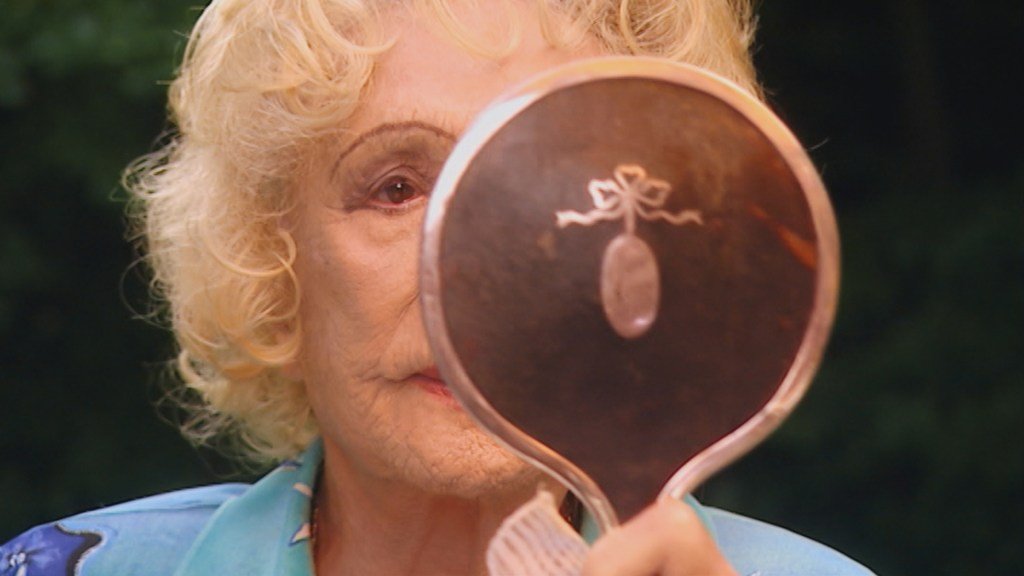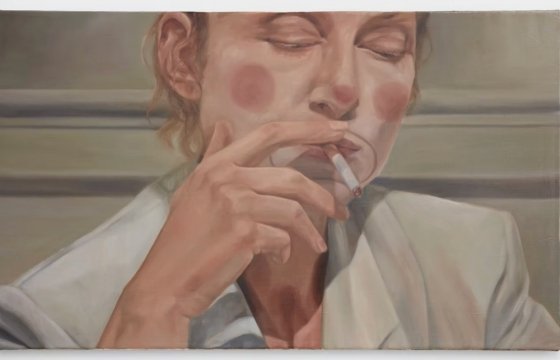

A woman roaming the mountainside splashes her face in an unseen stream. Her hair drips toward a crystal prism glowing in her steady hand. Mist fills the space around her; her silhouette is gilded in light.
In this scene from the 1932 film Das blaue Licht (The Blue Light), a plucky heroine emerges from an Alpine range. “Because a woman is the only one who can climb a dangerous mountain,” IMDb’s synopsis reads, “villagers regard her as a witch.” From today’s vantage, the clip exudes a feminist vibe of a piece with a Patagonia ad. You could be forgiven for feeling a wee bit stirred as she (literally) scales the sublime. And for not realizing that this woman — who also directed the film — would soon be the grande dame of fascist cinema.
Or, as the new documentary Riefenstahl provocatively asks: Could you?
Andres Veiel’s movie makes a quiet — and disquieting — case for the insidious potential of the moving image, whose seductive power can be easily harnessed to heinous political agendas. That the propaganda in question comes from Leni Riefenstahl, a woman who directed her singular talent toward not only valorizing but inventing the Nazi aesthetic, throws into relief how foolish it is to reflexively affiliate a woman’s degree of artistic ambition or achievement with automatic progress.

Excavating archives recently gifted to Berlin’s Museum of Photography, Veiel visually foregrounds the materiality of film, the inevitably tangled nature of Leni’s art and ideology. A celluloid strip whirs before us, pausing to reveal three figures in a field, a bucolic scene until one recognizes the inverted likeness of a trio of SS officers Here the documentary cuts to an iconic views of 1934 Nuremberg: Throngs of Germans furiously greet their beloved Führer, their bodies packed so close that one loses sight of where one human being ends and another begins. “As he spoke his very first words,” Leni recounts of the rally almost 50 years later, “I was overcome by a very peculiar feeling, my whole body … trembling. And I was somehow captured, as if by a magnetic force.”
If Leni was enchanted by Hitler’s presence, she did all she could with her films to arouse that same captivation in her country(wo)men. “The camera pans over to one side, and then it pans back over to the other side,” she avidly narrates as she reviews a clip of Triumph of the Will (1935). Her 90-year-old hand proudly swaying to the beat of Herbert Windt’s soundtrack, she adds, “These two shots combine to create the form of a circle, and the resulting effect is very powerful.”
Riefenstahl’s head editor, Stephan Krumbiegel, also grasps the power of strategic juxtapositions — exposing not only Leni’s Nazi infatuation, but that of the German people at large. Following a sequence of unsettling shots of the Nuremberg rally, we pause on a close-up of a girl peeking out from behind a row of soldiers. Her short hair frames her mischievous grin; her side part parallels the swastika behind her. She, like Leni, exudes “girl-power” swagger seemingly at odds with masculinist fascism — and in many other contexts, she, like Leni, would inspire rather than repulse.

And that is the point. Riefenstahl acknowledges Leni’s scrappy charm while also laying bare her terrifying legacy. Whether it’s taking a lover 40 years her junior or setting off to live among the Nuba people of Sudan, she had no issue flouting standard feminine decorum. Nor did she have a problem with building her career on the goose-stepping heels of a murderous regime. “What responsibility should I have?” she rebuffs a journalist decades later. “Back then 90% of people were enthralled by Hitler. You think I should have been a resistance fighter?”
Unlike Inglourious Basterds and Zone of Interest, among many other movies depicting Nazis as unconscionable sadists or bloodless tyrants, Riefenstahl steers clear of characterizing historic evildoers as so inhuman that they seem fundamentally different than audiences today. Rather, the portrayal of Leni and her ilk as human reminds us how vulnerable we, too, can be to the temptations of inhumanity. Monsters are not always monsters; they can be young girls with jaunty bobs and 60-year-old women with lusty libidos.
“What is the opposite of politics?” asks a German journalist of Leni in 1980, to which she glibly responds, “Art.” She lived to be 101, and if she ever regretted her work for the Nazis, she did little to acknowledge let alone atone for it. For the rest of her life — on television talk shows, in multiple documentaries, and in multiple memoirs — she presents her earlier self as a hapless go-getter, an uncompromising idealist in a misogynistic world, completely unaware of what the Nazi party stood for aside from German greatness and athletic fortitude. The more the evidence shows that Leni knew of Nazi atrocities and witnessed them firsthand, the more vehemently she insists on her complete inculpability.

Riefenstahl does not overtly blame its namesake for the murders of six million Jews and millions of others. Leni is no witch set aflame. Rather, Veiel presents a more disturbing possibility: Leni is guilty to the same extent that her films are guilty. Aesthetics and politics are inextricably linked; no image is innocent when wielded by the state, and no artist is blameless when her art exalts a fascist order.
As we witness Leni lead a crew of men in the production of her films, Riefenstahl suggests that we can both recognize her trailblazing influence and oppose her act of abetting barbarism. “[T]he role of feminism in fascism … may help us better understand not only fascism in the present,” asserts Sophie Lewis in Enemy Feminisms, “but also ourselves, the inheritors of a liberal-democratic feminist legacy that fascistic women helped bequeath.”
Riefenstahl is currently playing at Lincoln Center (165 and 144 West 65th Street, Lincoln Square, Manhattan) and select theaters nationwide. It will be available on select streaming services starting in October.


